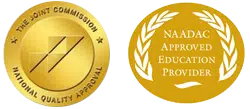Opioid addiction is a problem and affects people from all walks of life. According to the Substance Abuse and Mental Health Services Administration, 9.5 million individuals in the U.S. aged 12 or older misused opioids in 2020. That is a staggering number. Addiction is difficult to break especially for opioid users. Someone who is wants to make a positive change and take the steps towards recovery may wonder what is involved in recovery and how long it takes.
Recognizing Addiction
Before a person can change their lifestyle and habits, they must recognize the addiction. Opioid addiction involves the following signs:
- Feelings of euphoria
- Flushed skin
- Drowsiness
- Itching
- Nausea
- Vomiting
- Heaviness in the legs and arms
- Inability to think clearly
- Slower heart rate after euphoric feeling
Once an individual recognizes the signs of addiction, then steps can be taken to recover from the addiction.
Recovering from Opioid Addiction
The road to recovery isn’t the same for everyone. Recovery will depend on the length of time a person has used opioids. It also depends on the general health of the person and their mental state. Recovery time will also be affected by the specific opioid that is being abused. It can also be difficult to break the addiction if there are negative outside influences, such as peers that misuse opioids. Other factors that affect recovery include a person’s age and immune health.
Treatment for Opioid Addiction
It is almost impossible for someone who is addicted to opioids to break the addiction on their own. Because they are so addictive and a person will need more and more of the drug to get the desired effects, trying to stop without help can be almost impossible and even dangerous. The professionals at Baystate Recovery Center can provide medical care to ensure the negative side effects of withdrawal will be minimal. Often users will continue to use because withdrawal symptoms are to uncomfortable to experience. Withdrawal is best treated in a clinical setting overseen by medical professionals.
The withdrawal process can take a few days or up to a week. Once the withdrawal symptoms have stopped, the patient will receive counseling to include group and individual counseling. The duration of inpatient treatment is 30 days. Once inpatient treatment has been completed, it is imperative for the patient to continue with counseling and group therapy. Outpatient treatment is offered to those who must maintain employment and keep up with the responsibilities of family. This allows a person to go to work and be at home while still being monitored by medical staff. Recovery is a life-long process and most people who have fallen victim to opioid addiction must stay vigilant to avoid relapse.
If you or someone you love is suffering from opioid addiction, rest assured that the caring professionals at Baystate Recovery Center are waiting to help. We provide compassionate care and ensure you are comfortable while fighting the addiction. It is never too late to make a positive change in your life. You can depend on us to get you on the road to recovery so you can be the best version of yourself and live your best life. Contact us today so we can help you beat your opioid addiction and get on the road to recovery.
Baystate Recovery Center, a clinically Infused 12-Step Treatment Center for Drug and Alcohol Addiction, was founded by two partners in addiction treatment services, John Checchi and Michael Wilson.



